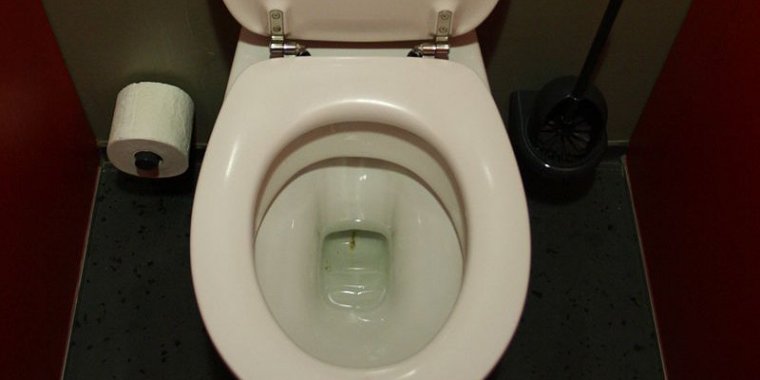| News / Science News |
Materials scientists invent new coating for self-cleaning, water-efficient toilets
Researchers mostly from Pennsylvania State University (Penn State) in the U.S. reported the invention of a new coating that could reduce bacterial growth, water waste, and odor when sprayed onto an ordinary house toilet by rendering its surface too slippery for anything to remain attached for long.

Materials scientists invent new coating for self-cleaning, water-efficient toilets. ![]()
According to the research team, half of all people worldwide are affected by limits on their water supply, while daily fresh water usage to flush the planet's roughly 1 billion toilets and flush urinals is upwards of 141 billion liters; which they note is several times larger than the total rate of water consumption for the continent of Africa.
Inventions that render the facilities more water-efficient, they reason, could have a profound impact on wastewater management, sustainable water use, and sanitation, possibly cutting the amount of water used to flush waste by, reportedly, a factor of two.
The team has developed a robust bio-inspired, liquid, sludge-, and bacteria-repellent coating that can essentially make a toilet self-cleaning.
The more something sticks to a surface, the more water it takes to rinse it off. The researchers reported inventing a coating good at resisting substances that are sticky and vary profoundly in viscosity across their mass—like human fecal matter.
They also reported the coating repels bacteria, which has implications for preventing the spread of disease and certainly reduces smells.
The invention, called a liquid-entrenched smooth surface (LESS) coating, involves two separate treatments, both presented as suitable for spraying onto ceramics amongst other materials.
The first spray is made of molecularly grafted polymers, specifically polydimethylsiloxane silicone, as resembling human hairs — though vastly thinner — once it has dried on the target surface, which makes the surface very smooth.
The second spray covers the target surface in silicone lubricant. According to the report, the two-spray process is complete in under five minutes and lasts for roughly 500 flushes before requiring reapplication. Existing treatments have tended to take hours to set.
Carl Hensman of the Bill and Melinda Gates Foundation, which offered a contest for redesigning the toilet some years ago, noted the ingredients in the sprays are also found in commonly used products like — in the case of the first spray — toothpaste, and are unlikely to pollute nearby water supplies; though he also remarked that, because the spray wears off, it was unlikely to be used widely in developing countries as the researchers claim to hope. (Wikinews)
YOU MAY ALSO LIKE





